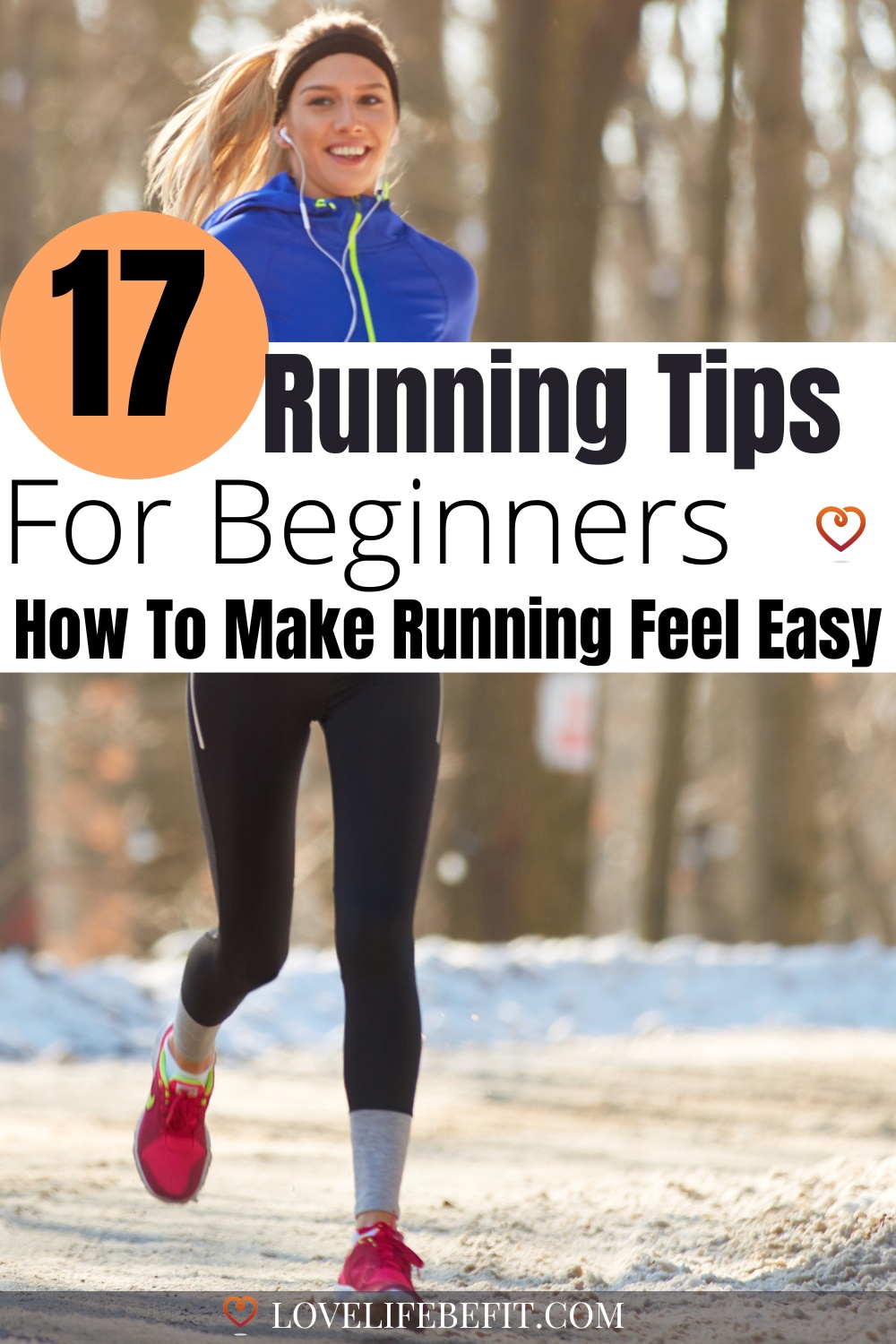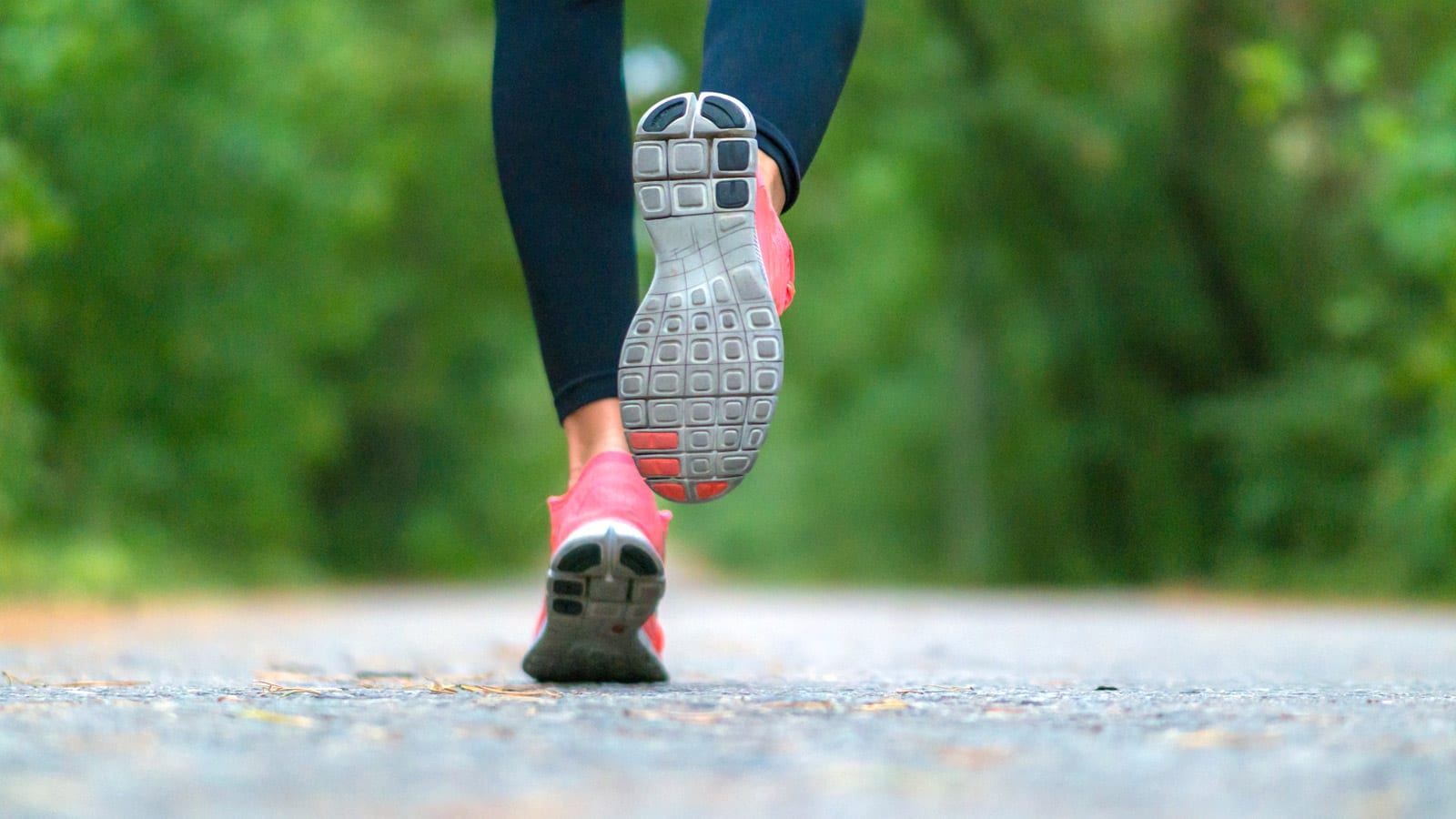17 Tips To Make Running Easier
The biggest complaint when someone takes up running? It feels so hard! You can’t breathe, your legs ache and your head is telling you to stop right now! But how to make running easier?
It’s not just beginner runners who struggle. Every runner will tell you, running after a layoff is tough. It can make you feel like a beginner all over again.
Yes, running does get easier with experience but as an improver, you can be pushing too hard to run faster and end up in a loop where you never seem to improve at running. Instead, your legs always ache and you’re struggling to breathe.
Running will always be challenging for new runners and elite runners alike, but the majority of your runs should be at an enjoyable, comfortable conversational pace. These running tips and strategies will help…

How To Make Running Easier
There are no magical running tips, you still have to put in the work and follow your training plans, but these ways to make running easier will get you through the first few months and on track to being a better runner.
#1 Reset Your Expectations
You’re not going to be the next American record holder on day one. If you’re a total beginner you need to build up your running strength first. Overdoing it as a new runner is a great way to get injured.
More experienced runners, re-starting after a layoff, still can’t expect to jump right back in. You’ll need to build back up to your former running level gradually. It’s frustrating, but sometimes you just need to be sensible and follow some running advice!
#2 Warm-Up & Start Slowly
This isn’t a race where you set off at full speed, it’s a training run. Even when you’re racing you warm up first. Start slow. The important thing is running at a conversational pace. That means if you can’t talk and run you need to slow down.
Most new runners really struggle with pace. You’re aiming for easy runs. Find out more about pacing and Rate of Perceived Exertion and why it’s an important tool for runners.
There’s time for tempo runs, interval training, and sprinting as you become stronger. Right now you need to slow down, work out what’s right for your own body, and learn how to maintain a steady easy pace. My tips to take up running will help.

#3 Take Walk Breaks
Running feels like hard work as a new runner – especially running consistently. The good news is – you don’t need to. There’s nothing wrong with taking a walking break. It’s a tactic I use even as an experienced runner.
It’s your body, your running. It’s okay to push yourself, but when your running form starts to suffer or running feels hard – take a walk break!
#4 Find A Point To Aim For
You certainly don’t have to be a beginner runner to follow this tip. I use it all the time. Pick a point on the horizon to aim for. It helps if it’s an object such as the next lamp post or a tree.
Make yourself run to your chosen object – one foot at a time. You can even count your steps!
When you reach it take a walk break before finding a new point to aim for. As you get stronger, increase the distances between walking breaks until you can run consistently at a steady pace.
The Couch To 5K Program works on the same idea, alternating walking and running. You can download the podcast for free.
#5 Conquer Your Breathing
Try to take deep belly breaths when you’re running rather than shallow breaths. If you’re struggling to breathe – slow down.
A rhythm helps such as taking two steps while breathing in, two steps while breathing out. Taking up yoga is also good if you’re struggling with your breathing technique.
Most runners breathe through their mouths, especially when they pick up the pace.
(If you’re struggling to breathe because you’re going down with a cold, it’s time to head home. Read my advice about running with a cold).
#6 Find A Buddy To Make Running Easier
Somehow it’s so much easier to run with a friend. Even one with four legs.
Having a training partner will help you keep going and chatting just helps the miles whizz by. It’s best to run with someone who’s a similar standard. This way you can hold each other accountable.
Stuck for a running buddy? Join a running club. I’ve always found them to be really friendly and a big help towards becoming a better runner.
#7 Pick A Fun Route
Distraction is often the best way to ease into running. Try not to run the same route every day. Go for variety!
If you choose a fun running route, it can help take your mind off your aching legs. It’s much easier to follow a winding scenic route than run on a monotonous route in a straight line.
I find there are certain routes I love where I always run better. Pick out a scenic route or somewhere you always feel good about running.
#8 Be Consistent
You need to run on a regular basis if you want running to be easier. It’s no good running just once a week. That won’t be enough to adapt your body to running.
Aim to run three times a week. In time, you can increase the number of runs each week but as a beginner, three times a week will get you off to a good start.

#9 Strength Training
If you always run on flat routes at one pace, your running will never improve. In time you’ll be able to run further, but you won’t be building the leg strength you need to become a better runner.
Once you’ve conquered running your first 5K route, it’s time to start building a runner’s body with strength training. Take on hills and start with some easy speed work such as fartlek where you alternate running at a faster pace with easy running.
It’s also important to add in some strength-training exercises. I use bodyweight exercises for runners or turn to yoga to build strength and find it gives me a full-body workout. Adding in just a ten-minute practice to your daily routine can make a big difference.
#10 Mix It Up
As a beginner runner, it’s easy to overdo it. Even experienced runners fall into the trap of running junk miles which don’t add to their overall fitness.
Unless you’re building endurance for a marathon or half marathon, you don’t want to be running on tired legs. Take rest days when you’re feeling tired and give those tight muscles a chance to recover! It’s better to allow your body to recover between training runs.
That doesn’t mean you need a rest day between every training run. Instead, mix it up. Add cross-training to your schedule.
Many runners will only run 3-4 times a week. Fill up the other weekdays by walking, biking, going climbing, swimming, taking a yoga class… any activity you enjoy. It will give you an energy boost, add to your strength and endurance and make your run feel easier.
#11 Stick To Your Training Plans
Following a training program is the first step to improving as a runner. Plus it’s a good way to get you over the finish line for your first race. If you’re a beginner – make sure you’re following a running program that’s appropriate for your level of fitness. There’s no point following a training plan for a half marathon if you’re never run 5K.
If you’re really struggling – old-timers, runners with a lot of extra weight or you haven’t exercised in years – start with a walking program. Improving your walking fitness is a good way to ease into running.

#12 The Long Run
The aim of most beginner runners is to run longer distances. You want to conquer how to run without getting tired. It’s a good aim when you’re starting from zero, but just make sure you’re increasing your long run by no more than one mile or 10% per week. A gradual increase is best for avoiding injuries.
How far you can run isn’t the only target to aim for as a runner and eventually running faster may be more important. But right now, as a new runner, you’re building a good running base. Your longer runs will be part of that.
You don’t need to increase the distance of your long run every week. If you’re finding the distance tough, try running at a slower pace or opt for a shorter run. It’s not a competition to run further. Instead, you’re building a strong runner’s body.
#13 Listen To A Podcast
A lot of runners listen to music to make running easier, but I’ve found listening to a running podcast works better. The running tips will inspire you and the conversation takes your mind off those sore muscles.
My favorite podcast is Marathon Talk.
#14 Wear Comfortable Running Shoes
A lot of people start running in shoes that don’t fit properly or in shoes that are more about fashion than function. For your first pair of running shoes take a trip to an independent running shop.
It’s important to get the right pair so try out different brands and styles. Always prioritize comfort. If the shoes don’t feel good straight out of the box – they won’t feel any better 5 miles down the road.
#15 It’s Okay To Be Slow
You may feel slow as a beginner runner. Just tell yourself it’s okay to be slow. You’re still running a lot faster than anyone sitting on the couch.
Slow runners are still runners. Still getting the benefits of being a runner and you can still improve and run faster. Just give it time!
#16 Get Enough Sleep
Starting running will really challenge your body. You’ll find adding running to your schedule much easier if you get enough sleep.
As adults, most of us forget to go to bed early enough and end up feeling tired. Running feels hard when you’re tired and it’s difficult to stick to a running program. Aim for 7 to 9 hours of sleep every night. You’ll have a lot more energy for running!
#17 Increase Your Cadence
Taking shorter strides with a faster leg turnover (called cadence) is a good way to make running feel easy. A lot of runners tend to over-stride which puts a huge amount of force through the lower body.
Make sure you’re not over-striding and work on your cadence. Faster strides is one of the best tips for improving your running.
Thoughts From Love Life Be Fit
I hope these running tips will help to make running feel easier. It can be hard to start running or getting back into running after a layoff.
Just hang in there – as the weeks progress it will get easier. Try to keep to a consistent schedule and your running will improve. Often the hardest part is heading out of the door.






